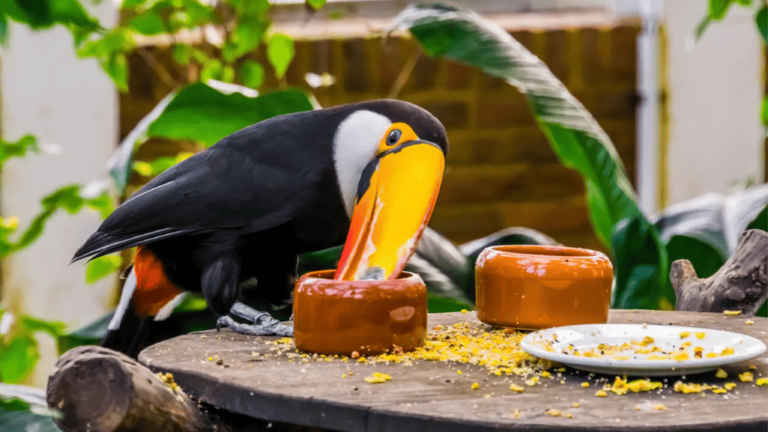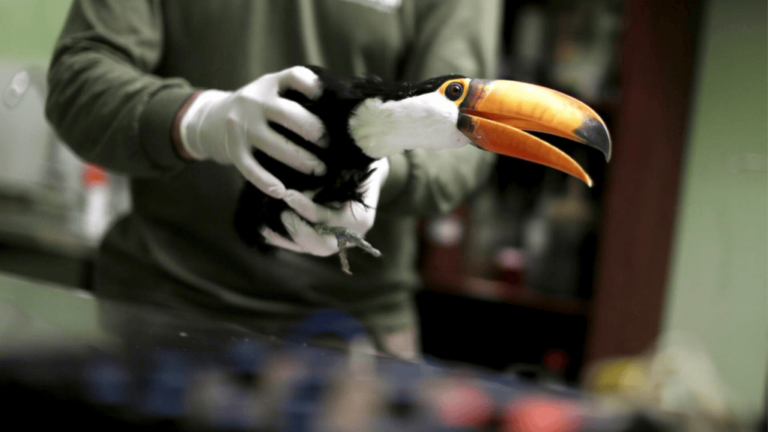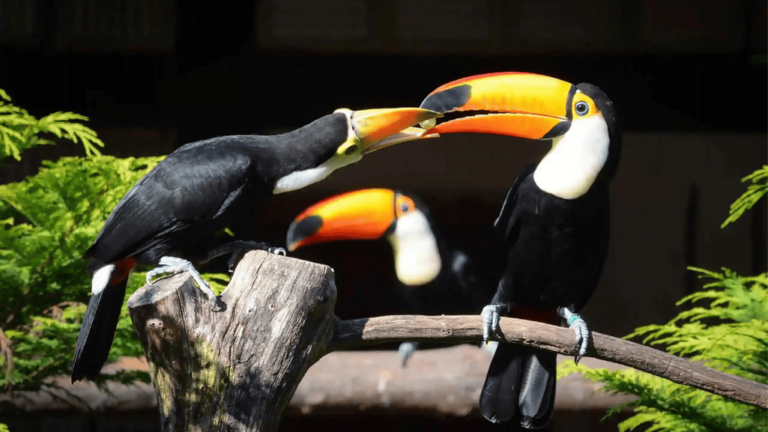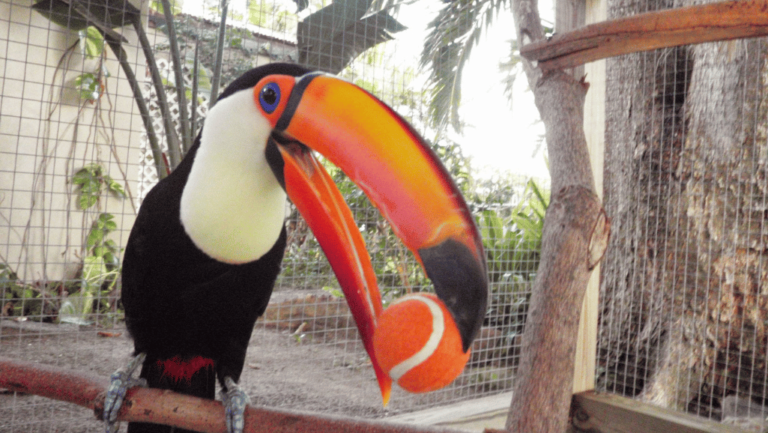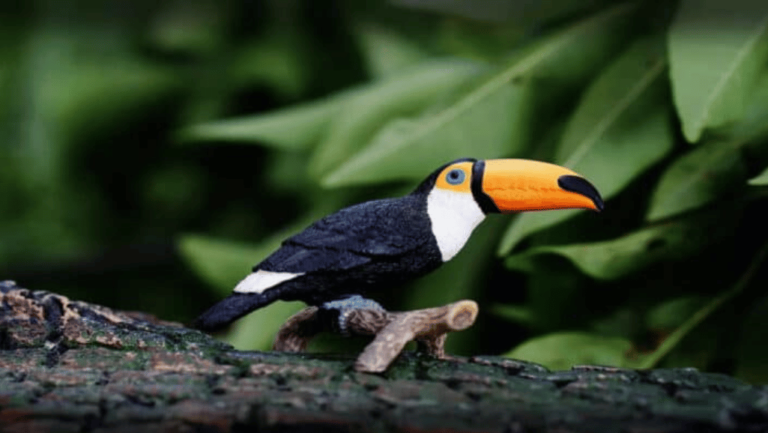Hand-feeding baby toucans is a crucial aspect of their care that requires proper knowledge and techniques. As adorable as these little birds may be, their unique needs must be catered to ensure their healthy growth and development.
In this comprehensive guide, we will provide you with expert tips on hand-feeding baby toucans and offer valuable information on their dietary needs and feeding schedule. Whether you’re a first-time toucan parent or an experienced hand-rearer, this guide will equip you with the necessary know-how to raise your baby toucans effectively.
From understanding the weaning process to mastering feeding techniques, we’ll cover every aspect of hand-feeding to ensure you’re prepared to provide the best care for your fluffy friends. So let’s dive in and discover the wonderful world of nurturing and nourishing baby toucans!
Key Takeaways:
- Hand-feeding baby toucans is essential for their care and development.
- Understanding the weaning process is crucial in transitioning them to solid food.
- Feeding techniques and schedule play a vital role in their growth.
- A balanced diet, including pellets, fresh fruits and veggies, millet, and nuts, is recommended for weaning toucans.
- Follow expert tips to ensure successful weaning and optimal care for your baby toucans.
Understanding the Weaning Process
Weaning is a crucial stage in the development of baby toucans, marking their transition from formula feeding to a diet of food and water. It is a gradual process that requires careful attention to ensure the health and well-being of the young birds.
One of the methods commonly used for weaning Toucans is known as abundant weaning. This approach involves gradually introducing solid foods alongside their regular formula feedings. Abundant weaning allows baby toucans to explore and experiment with different textures and flavors, promoting a smooth transition to a fully independent diet.
It is important to note that forced weaning, where the birds are abruptly removed from formula feeding and forced to switch to solid food, can be harmful to their overall development and well-being. Forced weaning can lead to nutritional deficiencies and behavioral problems in baby toucans. Thus, it is crucial to avoid this approach and opt for the gradual and natural weaning process.
Weaning charts are invaluable tools for toucan owners during this transitional phase. These charts provide a structured plan and guidelines for introducing different foods, gradually reducing formula feedings, and monitoring the bird’s progress. They are specifically designed for different toucan species, taking into account their unique dietary requirements and growth patterns.
Example Weaning Chart:
| Week | Formula Feeding (ml) | Introduction of Solid Foods |
|---|---|---|
| Week 1 | 10 ml | Start offering small pieces of softened fruits and vegetables, such as mashed bananas and steamed carrots. |
| Week 2 | 7 ml | Introduce small amounts of pelletized toucan food, soaked in water to make it easier to consume. |
| Week 3 | 5 ml | Gradually increase the variety of fruits and vegetables, incorporating options like papaya, mango, and leafy greens. |
| Week 4 | 3 ml | Continue offering pellets, alongside chopped nuts and seeds, as toucans start developing stronger beaks and chewing abilities. |
Weaning baby toucans is a delicate and important process that lays the foundation for their long-term diet and well-being. It is essential to understand the weaning process, promote abundant weaning, avoid forced weaning, and follow weaning charts tailored to their species. By providing a gradual and appropriate transition, you can ensure the health and growth of your baby toucans.
Feeding Techniques and Schedule
When it comes to hand-feeding baby toucans, understanding the right techniques and following a proper feeding schedule is crucial for their growth and development. Here, we will explore the essential feeding techniques and provide guidelines on creating an ideal feeding schedule for your feathered friend.
Feeding Techniques
Feeding baby toucans requires a gentle and careful approach to ensure their well-being. Here are some effective techniques to consider:
- Use a syringe or spoon: Depending on the toucan’s age and size, a syringe or spoon can be used to deliver the formula. Make sure to choose a method that is comfortable for both you and the toucan.
- Hold the toucan securely: Ensure that you have a firm but gentle grip on the toucan while feeding to prevent any accidental injuries.
- Observe the toucan’s feeding behavior: Pay attention to the toucan’s cues and feeding behavior. This will help you gauge their appetite and adjust the feeding amount accordingly.
- Feed slowly and patiently: Allow the toucan to consume the formula at their own pace. Avoid rushing the feeding process and be patient with their progress.
Feeding Schedule
A consistent feeding schedule is essential for the healthy growth and development of baby toucans. Here is a general guideline for creating a feeding schedule:
| Age | Feeding Frequency | Amount per Feeding |
|---|---|---|
| Newborn to 1 week | Every 2 hours | 2-4 cc of formula* |
| 1 week to 3 weeks | Every 3 hours | 5-8 cc of formula* |
| 3 weeks to 6 weeks | Every 4 hours | 10-15 cc of formula* |
*Note: The amount of formula may vary depending on the toucan’s species, size, and individual needs. It is always recommended to consult with an avian veterinarian for personalized feeding instructions.
As the toucan progresses through the weaning process, gradually introduce small amounts of soft fruits, vegetables, and pellets alongside the formula feeding. This will help them transition to an adult diet while ensuring they receive the necessary nutrients for their development.
“Establishing a consistent feeding schedule and using the proper techniques are vital for the success of hand-feeding baby toucans. By following these guidelines, you can provide optimal care and support their healthy growth.”
Recommended Foods for Weaning Toucans
Now that you understand the weaning process, it’s crucial to know the specific foods that are recommended for weaning baby toucans. A balanced diet is essential to ensure their proper growth and development. Here are the top foods to include in a toucan weaning diet:
- Pellets: High-quality pellets designed specifically for toucans are an excellent source of essential nutrients, vitamins, and minerals. Look for pellets that are formulated to meet the dietary needs of weaning toucans. These pellets should be moistened with water to facilitate easier consumption.
- Fresh Fruits and Veggies: Introduce a variety of fresh fruits and vegetables into the toucan’s diet. Some suitable options include bananas, apples, grapes, melons, papayas, carrots, spinach, and kale. Ensure that the fruits and vegetables are thoroughly washed and cut into small, manageable pieces.
- Millet: Millet is a nutritious grain that can be offered to weaning toucans. It is rich in carbohydrates, protein, and fiber. Millet can be provided as a separate food item or mixed with other fruits and vegetables to enhance the taste and improve acceptance.
- Nuts: Nuts, such as almonds and cashews, are a great source of healthy fats and protein for toucans. Crushed or chopped nuts can be sprinkled over fruits and vegetables or mixed into their pellets to provide added nutrition.
Take note that while these foods are highly recommended for weaning toucans, it’s important to gradually introduce them into their diet. Start by offering small portions and gradually increase the quantity as the toucans’ weaning progresses. Additionally, always ensure that the foods provided are fresh and of good quality.
Incorporating these recommended foods into the weaning diet will help ensure that baby toucans receive the necessary nutrients for their overall health and development.
Feeding baby toucans a varied and nutritious diet is crucial during the weaning process. Providing a balanced mix of pellets, fresh fruits and veggies, millet, and nuts helps meet their specific dietary needs. Remember to introduce new foods gradually and monitor their acceptance to ensure the successful weaning of toucans.
Tips for Successful Weaning
Successfully weaning baby toucans requires careful observation and attention to their behavior during this crucial stage of development. Here are some tips to help you ensure a smooth transition:
1. Understanding Baby Toucan Behavior:
- Observe their interest: During the weaning process, baby toucans may show varying levels of interest in formula feeding. Try wiggling the syringe tube gently to gauge their response and adjust the feeding accordingly.
- Monitor food acceptance: Pay attention to how well the baby toucans accept food. Gradually introduce new foods and monitor their reactions. Some foods may be more readily accepted, while others may require a longer adjustment period.
2. Consistent Formula Temperature:
The temperature of the formula plays a crucial role in baby toucans’ acceptance and digestion. Make sure to maintain a consistent temperature of around 105-110°F (40-43°C) throughout the weaning process. Use a thermometer to check the temperature and adjust as needed.
3. Encouraging Water Drinking:
As part of the weaning process, it is important to encourage baby toucans to start drinking water independently. Offer a shallow dish of clean water alongside their food, making it easily accessible. Monitor their water intake to ensure they stay hydrated.
Expert Tip: Some baby toucans may be hesitant to drink water initially. To encourage them, you can gently dip their beak in the water, allowing them to taste it and realize its importance. Be patient and persistent, as they will eventually learn to drink water on their own.
4. Gradual Introduction of Solid Foods:
Introduce a variety of solid foods to baby toucans gradually. Start with soft fruits and vegetables, such as mashed bananas or steamed sweet potatoes. As they become more comfortable with these foods, you can gradually introduce pellets, millet, and nuts into their diet. Monitor their response to each new food and adjust accordingly.
Here is a sample weaning schedule for baby toucans:
| Week | Food |
|---|---|
| 1-2 | Formula (80-100% of diet) |
| 3-4 | Soft mashed fruits and vegetables (20-30% of diet) |
| 5-6 | Introduce pellets, millet, and nuts (gradually increase proportion) |
| 7 onwards | Wean fully onto solid foods (reduce formula gradually) |
By following these tips and closely monitoring your baby toucans’ behavior and feeding patterns, you can ensure a successful weaning process and promote their healthy development.
Conclusion
Hand-feeding baby toucans is a rewarding yet delicate process that requires patience, knowledge, and proper techniques. Throughout this comprehensive guide, we have provided a range of tips and insights into successfully hand-feeding and weaning these magnificent birds. By following these guidelines and meeting the specific dietary needs of Toucans, you can ensure their optimal care and development.
We have explored the weaning process, emphasizing the importance of abundant weaning while cautioning against forced weaning. Understanding the feeding techniques and schedule is crucial for providing the best care for your baby toucans. Additionally, we have recommended a balanced weaning diet that consists of pellets, fresh fruits and veggies, millet, and nuts, ensuring your toucans receive the essential nutrients for growth and well-being.
By paying attention to baby toucan behavior, monitoring formula temperature, and encouraging food acceptance and water drinking, you can navigate the weaning process successfully. With the information provided in this guide, you are equipped with the knowledge and tools to give your baby toucans the best possible start in life. Remember, consistent and attentive care plays a vital role in their overall development and ensures a long and healthy life for these fascinating creatures.
FAQ
Why is hand-feeding baby toucans important?
Hand-feeding baby toucans is essential for their care as it ensures they receive the proper nutrition and social interaction necessary for their development.
What is the weaning process for baby toucans?
Weaning is when baby toucans transition from formula feeding to a diet of food and water. It is an important stage in their development.
What is abundant weaning?
Abundant weaning is a safe and healthy method where baby toucans are offered a variety of foods to encourage them to eat independently.
Why should forced weaning be avoided?
Forced weaning can cause stress and negatively impact the health and development of baby toucans. It is important to allow them to naturally progress through the weaning process.
Are there weaning charts available for different toucan species?
Yes, weaning charts are available for different toucan species, providing guidelines on the duration and progression of the weaning process for each species.
What are the recommended feeding techniques and schedule for baby toucans?
The feeding techniques for baby toucans include using a syringe or spoon to provide formula and gradually introducing solid foods. The feeding schedule should align with the stages of the weaning process.
What should be included in a weaning toucan’s diet?
A weaning toucan’s diet should include a balance of pellets, fresh fruits and veggies, millet, and nuts to meet their nutritional needs.
Are there specific food brands and types that are recommended for weaning toucans?
Yes, there are specific brands and types of food that are suitable for weaning toucans. It is important to choose high-quality, nutritionally balanced options formulated for toucans.
What tips can help ensure successful weaning of baby toucans?
Some tips for successful weaning include observing the baby toucan’s behavior, wiggling the syringe tube to gauge their interest, maintaining the right formula temperature, and ensuring they are drinking enough water.
What is the importance of hand-feeding baby toucans?
Hand-feeding baby toucans is crucial for their care and development. It requires patience, knowledge, and proper techniques to ensure their optimal health and well-being.





